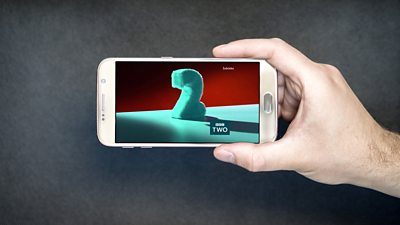Throughout October we'll be taking a closer look at some of the work of our Mobile Distribution team - from Broadcast Wi-Fi to 5G trials. In this post Lead Research Engineer Andrew Murphy explains how, after we have experimented with the technology over the last few years, the latest release of mobile standards adds support for broadcast services. This means content can be distributed between large numbers of users at the same time over mobile networks, rather than users receiving the content individually.

Around 18 months ago, the mobile industry kicked-off an initiative on television services over mobile networks within . The feature Known as βEnTVβ, aimed to allow wide-scale TV distribution, enhancing the existing capabilities of 4G Broadcast ().
This kind of efficient distribution of content over mobile is something we have quite a bit of experience of from our involvement in and in London. which included the possibility for a single transmission to be shared across users of different mobile operators and the need for the interface between the broadcaster and the mobile network to be specified.
The ΒιΆΉΤΌΕΔ, as a public service broadcaster, has a number of requirements for the distribution of its services and, working with colleagues from other broadcasters in the along with members of the mobile industry we have worked to promote these requirements within 3GPP.
3GPP is a large and complex organisation comprising hundreds of network operators, handset manufacturers and content providers from all across the world and, in a crowded schedule of on-going developments and studies, there are many views and lengthy, competing discussions about the way forward for mobile standards. It is therefore not always possible to get time to introduce new work items and consensus among a number of members is therefore vital.
Over a number of years, the EBU has been working to build understanding between the broadcaster and mobile communities through joint groups such as under its and this was an important foundation. Direct representation by the ΒιΆΉΤΌΕΔ and other broadcasters at 3GPP meetings along with the presentation and analysis of data to back up our case were also very important. For example, we were able to demonstrate that, as a public service broadcaster, we need to serve people everywhere, including those away from dense population areas - and this had an impact on the design parameters for the enhancements.
The process has been a remarkable success and contains essential features for broadcast delivery over mobile networks such as the possibility for free-to-air reception. Release 14 also supports larger network coverage areas which will allow broadcasters to target rural areas more easily than is currently possible. Itβs also addressed a number of the limitations that we identified in our own trials of 4G Broadcast. For example, the standardisation of the interfaces between mobile network and the broadcaster and also between the network and the application on the handset (so-called βxMBβ and βTRAPIβ respectively) will make it simple to make content available and deliver applications to take advantage of these features.
Two years ago, no one would have imagined that public service broadcaster requirements would have been included in a mobile standard from 3GPP and it is thanks to cooperation between broadcasters and the mobile industry that this has taken place.
Our work on mobile broadcast continues and weβre currently carrying out further gap analysis work with industry coordinated through the EBU to ascertain what, if any, gaps remain in the mobile standards as well as looking ahead to what 5G might mean for the distribution of public service media.
- -
- ΒιΆΉΤΌΕΔ R&D - All of our articles on 4G and 5G including:
- ΒιΆΉΤΌΕΔ R&D - Broadcasting Over 5G - Delivering Live Radio to Orkney
- ΒιΆΉΤΌΕΔ R&D - 4G & 5G Broadcast
- ΒιΆΉΤΌΕΔ R&D - TV Over Mobile Networks - ΒιΆΉΤΌΕΔ R&D at the 3GPP
- ΒιΆΉΤΌΕΔ R&D - 5G-Xcast
- ΒιΆΉΤΌΕΔ R&D - 4G Broadcast for the Commonwealth Games 2014
- ΒιΆΉΤΌΕΔ R&D - 4G Broadcast technology trial at Wembley 2015 FA Cup Final
- ΒιΆΉΤΌΕΔ R&D - 4G Broadcast: Can LTE eMBMS Help Address the Demand for Mobile Video?
- ΒιΆΉΤΌΕΔ R&D - 5G Trials - Streaming AR and VR Experiences on Mobile
- ΒιΆΉΤΌΕΔ R&D - 5G Smart Tourism Trial at the Roman Baths
- ΒιΆΉΤΌΕΔ R&D - New Content Experiences over 5G Fixed Wireless Access
- ΒιΆΉΤΌΕΔ R&D - New Audience Experiences for Mobile Devices
- ΒιΆΉΤΌΕΔ R&D - Unlocking the Potential of 5G for Content Production
- ΒιΆΉΤΌΕΔ R&D - Building our own 5G Broadcast Modem
- ΒιΆΉΤΌΕΔ R&D - Broadcast Wi-Fi
